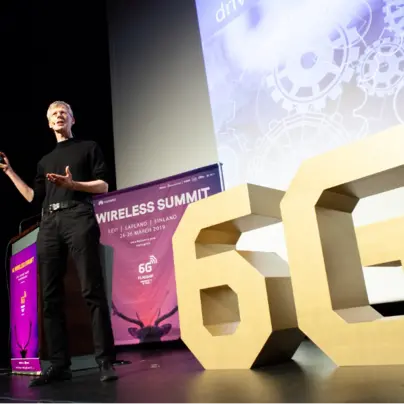Hexa-X – The joint European initiative to shape 6G

A continuation of European leadership in communication technology
On January 12 Hexa-X officially kicked-off with a widely attended (140 participants) online consortium meeting. In our joint opening keynote, we emphasized the importance of this European Commission Flagship research project to define the future of 6G.
European Commission research projects have been at the forefront of nearly every generation of mobile networks. Typically, one defining flagship project lays the foundation for the next-generation network architecture and technology. These defining projects set the stage for dozens of other research projects in regard to technologies, services and trials, which operate in a larger cross-project coordination framework. For example, we still point to WINNER as the defining project for 4G and WWI (Wireless World Initiative) as a cross-project initiative, even though it started almost two decades ago. Ten years later, people in the field remember that METIS created the basis for 5G and many research projects in 5GPPP (5G Public Private Partnership).
Introducing the Hexa-X project
Being a 2.5-year project within EU’s Horizon 2020 ICT-52 program, Hexa-X is a consortium of 25 key players from adjacent industries and academia. Nokia has the overall lead and Ericsson the technical manager role in the project. Hexa-X is a broad collaborative initiative to frame the 6G research agenda and lay the groundwork for a long-term European investment in future wireless network technology.
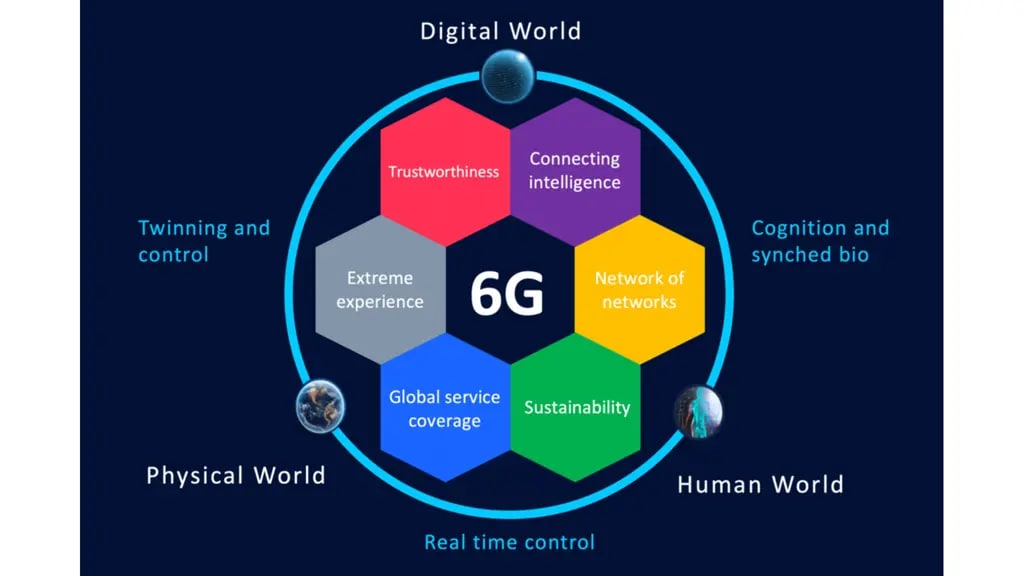
Hexa-X will pave the way to the next generation of wireless networks (Hexa) by explorative research (X). The Hexa-X vision is to connect human, physical, and digital worlds with a fabric of 6G key enablers.
Research challenges and drivers
Looking towards 2030, we can expect 5G will have successfully transformed society for ten years through many new and impactful applications and services in the dimension of eMBB, as well as mission critical and massive machine connectivity. At this point there will be a need to go beyond what the 5G evolution of networks can offer and provide new capabilities. The time has come to start exploring elements of a bold vision for the 6G era and formulate the associated key challenges of research. We see that the importance of key values such as trustworthiness, sustainable development, and digital inclusion will continue to grow and that we should define and build future networks starting from these principles. The great potential of Artificial Intelligence (AI) and Machine Learning (ML) should be fully used to optimize networks, enable new services, and in the end, be used to make our lives better. Future networks should deliver the immersive communication and cyber-physical systems we foresee coming and should have an extreme versatility and flexibility to serve the high number of use cases. Taken together, we have outlined six research challenges on the road to communications in the 2030s and the networks of the 6G era:
-
Connecting intelligence – Networks should assume a crucial role and responsibility for large-scale deployments of intelligence in the wider society.
-
Network of networks – Networks should aggregate multiple types of resources, including communication, data and AI processing that optimally connect at different scales.
-
Sustainability – Networks should form an energy-optimized digital infrastructure, bring UN SDGs to life and assist the implementation and operation of EU Green Deal.
-
Global service coverage – Networks should put digital inclusion as one of the top priorities and encompass efficient and affordable solutions for global service coverage.
-
Extreme experience – Networks should support extreme experience of services, e.g. fully immersive communication or remote control at scale, and accelerate the pace of digitisation.
-
Trustworthiness – Networks should ensure the confidentiality and integrity of end-to-end communications, and guarantee data privacy, operation resilience and security.
Use cases going for 2030
In the world of 2030, we expect many new use cases, driven by societal demands and realized with emerging technologies. Some of these will be widely enhanced experiences of services available already today, while others will be innovative applications of mobile networks.
The Hexa-X vision for 6G revolves around interactions between three worlds: a human world of our senses, bodies, intelligence, and values; a digital world of information, communication and compute; and a physical world of objects, organisms and processes.
Development will be intense around the interactions between these worlds; through connected intelligence, enabling machines to communicate without limits; immersive communication, removing distance as a limit for human experience; twinning of the physical sensing/actuators and programmable digital representations; and finally the fundamental ambition of a sustainable world, enabled by network technology.
Realizing these interactions will open up many new use cases, applications, and services which will benefit people on all levels: as consumers, parts of enterprises or societies.
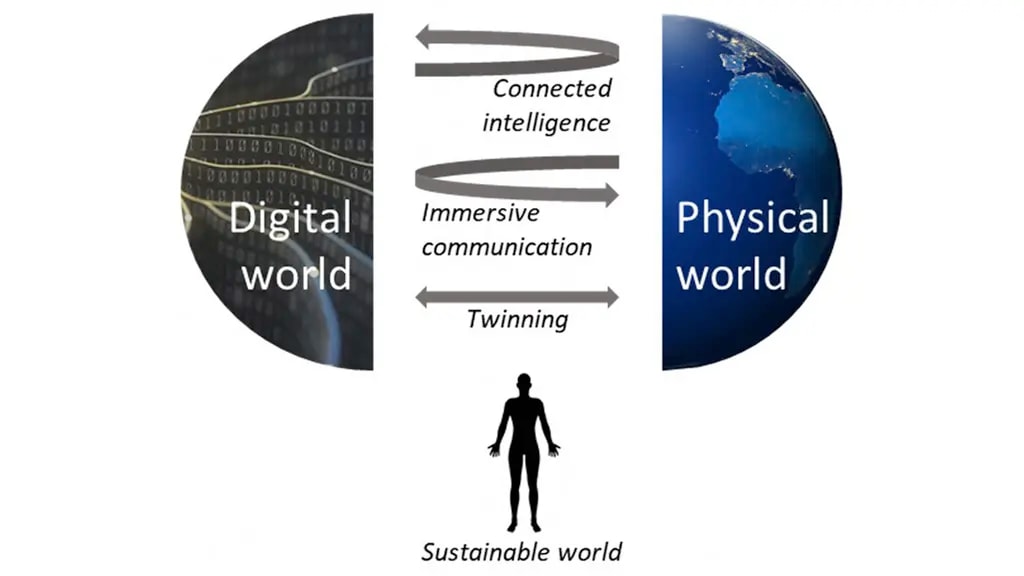
Performance and values to target
In a 6G world, some of the existing key performance indicators (KPIs) will need to be extended to capture future needs, such as bit rate or connection density. However, it is clear that merely extrapolating the KPIs will not suffice to frame the 6G agenda of research, which needs to be considered end-to-end to include some other aspects, such as energy efficiency or service availability. To set the scope of 6G, we also think that key-value indicators (KVI) will help take the dimensions of impact that go beyond the scope of deterministic performance measures into full account. It is expected that 6G systems will incorporate novel aspects, such as integrated sensing, artificial intelligence, local compute-and-storage, and embedded devices. These aspects will both facilitate enhancements to existing KPIs, as well as require a whole slew of new KPIs and KVIs which have not traditionally been associated with mobile networks, such as sensing accuracy, computational round-trip-time, AI model convergence time, etc.
As a foundational objective for all future technology, the United Nations Sustainable Development Goals (SDGs) will be important for Hexa-X and serves as an inspiration as well as a measuring stick and the project foresee a substantial enabling impact on most of the SDGs.
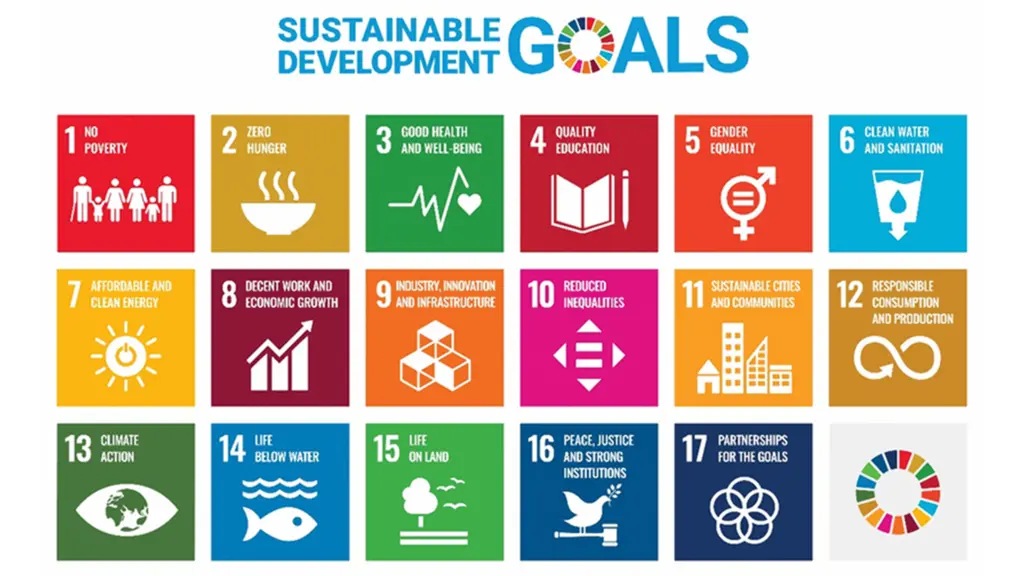
Technical areas to be studied
The technical scope is very wide given the nature of this project – explorative research towards future networks. We will build on 5G technology evolution, but the focus will be on the exploration of the revolutionary. What will be incorporated into future 6G networks remains to be seen after we start our thorough evaluation.
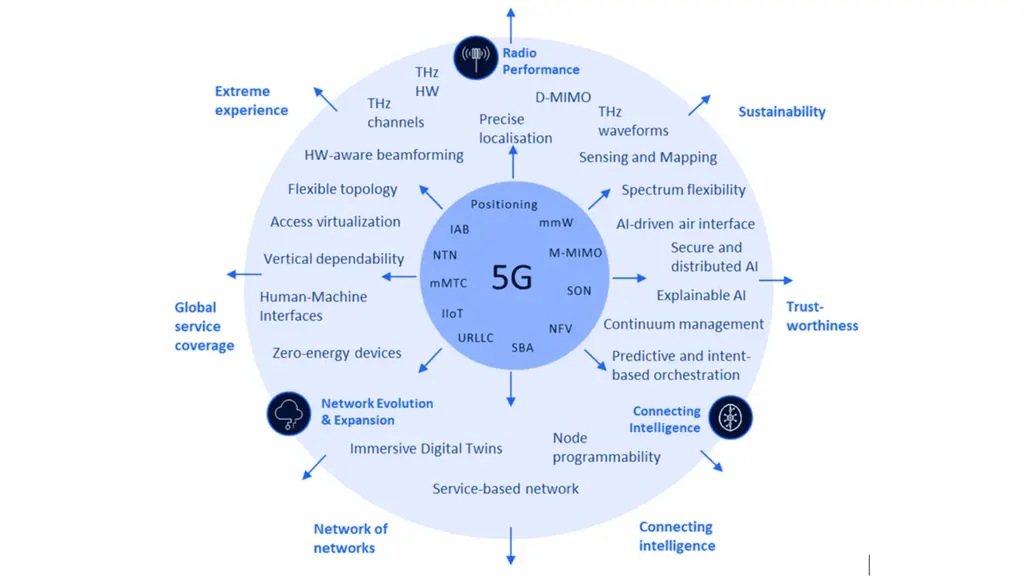
The planned research falls into three main categories, besides the vision work towards the foundations of an end-to-end system and outreach activities, are:
- Radio performance - The aim here is to deliver extreme performance by developing key radio technologies for the next generation, through access in higher bands, new antenna concepts, and advanced positioning methods. We need to bring radio performance to the next level to deliver the new use cases. Key steps here are going towards THz communication to achieve extreme data rate and extreme capacity, by studying RF transceiver models and phased array concepts, implementation-friendly waveform designs, establishing novel hardware-aware beamforming design, and developing techniques enabling scalable D-MIMO systems. 6D localisation and sensing (3 spatial and 3 orientation dimensions) with very high precision to achieve high-resolution mapping which is key for immersive communication and cyber-physical systems. This will be done with wide bandwidths (several GHz), dense and diverse deployments and extended use of beamforming, using dedicated algorithms and new signal designs to optimise the resolution, and accurate radio channel models with spatial and temporal consistency.
- Connecting intelligence - In this area the objective is to make the most out of AI technology applied to networks – to develop methodology, algorithms, and architectural requirements for an AI-native network, through AI-driven air interface and AI governance. The 6G networks should be designed to incorporate AI operation to optimize network performance, as well as operate to optimize AI performance for other services. Key targets here are to embed AI functionality into the signal processing chain and develop suitable learning methods. Governance and protocols for secure AI needs to be developed for the integration of AI into trustworthy network systems. Further, intelligent orchestration covering dynamic resource management, data-driven optimization, and intent-based operation will be developed to streamline operations of future networks. The potential of node programmability will be studied for improved development speed and flexibility.
- Network evolution and expansion - The research goal here is to deliver enablers for an intelligent network of networks, through network disaggregation and dynamic dependability, forming the backbone of the 6G system. Through specialized and flexible networks such as mesh networks, NTNs, D2D, cell-free MIMO and local device networks the requirements of both extreme performance and global service coverage can be met. Service-based networks will be taken further with solutions for fully cloud-native RAN and CN network functions using common platform functions and distributed cloud infrastructure. Dynamic and efficient dependability will be targeted through cross-layer technologies such as communication-control co-design and spatiotemporal network design that gives insight on network stability, scalability, and dependable operation. Enablers for Human-Machine Interfaces and fully immersive digital twins will be developed, in the form of flexible assignment of heterogeneous resources and dependable network services, and an execution environment guaranteeing very high levels of privacy, user transparency, and availability will be developed for the digital twin concept, useable by other human-in-the-loop and critical industrial applications as well.
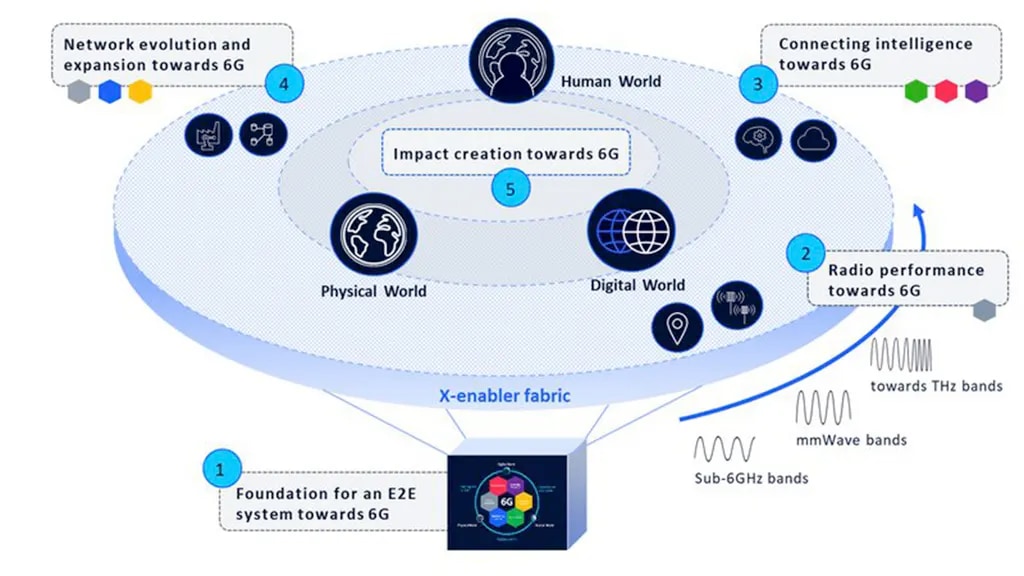
Moving forward towards 6G
Hexa-X is the defining project for 6G and will become the primary seed for many other projects in the Smart Networks & Services (SN&S) framework geared towards European leadership in 6G. That is why the kick-off of Hexa-X is a historic moment, and why so many research engineers are excited to collaborate on and invent the next-generation network that is expected to be deployed in the 2030s.
On January 26, the Hexa-X Advisory Group met for the first time. The Advisory Group consists of 18 research leaders and CTOs from adjacent industries across the globe, as well as the United Nations. It provided valuable outside-in perspectives and important feedback to help with the direction of the project and provided insights into the dynamics of 6G in the global ecosystem.
We conclude by wishing all of the researchers good luck and success in achieving the Hexa-X mission. We also want to instill a sense of urgency because the work has just begun and 6G is already gaining momentum in other parts of the world. Everyone in Hexa-X has a responsibility to ensure European leadership for the next generation of networks.
You can read more about the vision and technology vectors pursued on the Hexa-X website.
This blog was co-authored by Magnus Frodigh.
Interested in learning more about our 6G research and 6G vision. Check out our 6G page.
